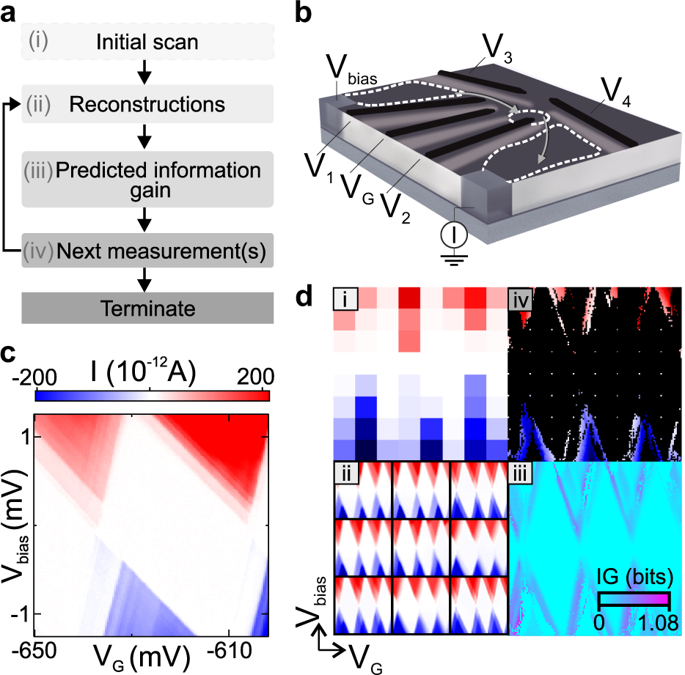npj Quantum Information ( IF 6.6 ) Pub Date : 2019-09-26 , DOI: 10.1038/s41534-019-0193-4 D. T. Lennon , H. Moon , L. C. Camenzind , Liuqi Yu , D. M. Zumbühl , G. A .D. Briggs , M. A. Osborne , E. A. Laird , N. Ares

|
Scalable quantum technologies such as quantum computers will require very large numbers of quantum devices to be characterised and tuned. As the number of devices on chip increases, this task becomes ever more time-consuming, and will be intractable on a large scale without efficient automation. We present measurements on a quantum dot device performed by a machine learning algorithm in real time. The algorithm selects the most informative measurements to perform next by combining information theory with a probabilistic deep-generative model that can generate full-resolution reconstructions from scattered partial measurements. We demonstrate, for two different current map configurations that the algorithm outperforms standard grid scan techniques, reducing the number of measurements required by up to 4 times and the measurement time by 3.7 times. Our contribution goes beyond the use of machine learning for data search and analysis, and instead demonstrates the use of algorithms to automate measurements. This works lays the foundation for learning-based automated measurement of quantum devices.
中文翻译:

使用机器学习有效地测量量子设备
诸如量子计算机之类的可扩展量子技术将需要表征和调整非常大量的量子设备。随着片上设备数量的增加,此任务变得越来越耗时,并且在没有高效自动化的情况下将难以解决。我们提出由机器学习算法实时执行的量子点设备上的测量。该算法通过将信息理论与概率深度生成模型相结合来选择最有信息量的测量结果,然后再执行该概率模型,该模型可以根据分散的局部测量结果生成全分辨率的重建结果。对于两种不同的当前地图配置,我们证明了该算法优于标准的网格扫描技术,可将所需的测量次数减少多达4倍,并将测量时间减少3.7倍。我们的贡献超出了将机器学习用于数据搜索和分析的范围,而是展示了使用算法来自动进行测量。这项工作为基于学习的量子设备自动测量奠定了基础。











































 京公网安备 11010802027423号
京公网安备 11010802027423号